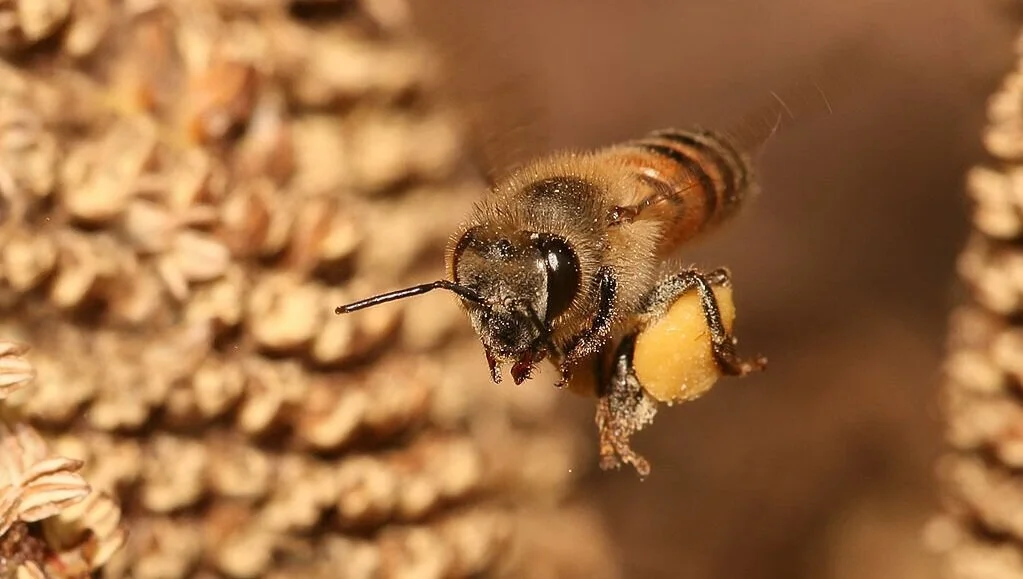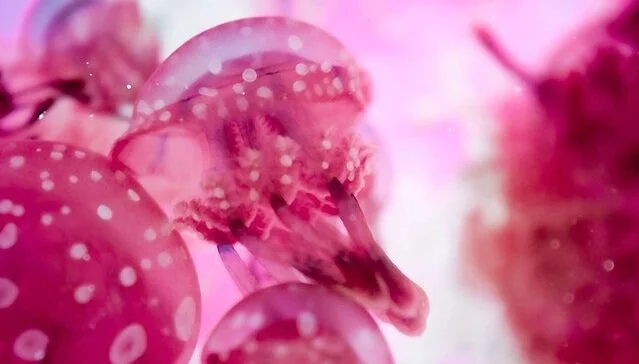“May I Have Your Bees Please?” explores the fuzzy line between truth and science
“I imagine you want to talk about the bees,” says Ruth Marsh, picking up the phone from her home in Halifax, Nova Scotia.
Marsh, an interdisciplinary artist, is the creator of a Facebook group titled, “May I Have Your Bees, Please?”, a group that hosted an open call prompting Canadians to mail bee corpses they found to Marsh.
I did, in fact, want to talk about the bees.
Once Marsh has her hands on the dead bees, she begins rebuilding them, attaching discarded jewelry, electronics, or old computer parts where limbs may once have been lost. If you’re having trouble envisioning this, think what little steampunk bees might look like.
“I am building a wry vision of a future wherein all bees have perished due to human causes,” explains Marsh, “It was like a pseudo-science project where I, a sort-of well intentioned, slightly naive laborer, was going to solve the bee problem by repairing them one at a time.”
According to the Canadian Wildlife Federation, you can thank bees for approximately one third of the food on your plate every day. Yet, North American Indigenous bee species currently face many threats—extinction among them.
A shortage of pollinators is becoming noticeable in North America, due to modern agricultural practices, loss of habitat and food sources, diseases, viruses and pests, and pesticide exposure. As of 2021, nine wild bee species are listed on Canada’s species risk registry.
Currently, the Canadian government has no standardized method for tracking and monitoring the bee population.
According to the BBC, a world without bees will struggle to sustain our current population and food systems will crumble.
“Steampunk” bees. Photos courtesy of Ruth Marsh
Six years after graduating from the Nova Scotia College of Art and Design in 2006, Marsh was running a painting practice in encaustics, a form of art which involves melting beeswax and adding colored pigments to create your paint.
“I was making a lot of environmentally themed work with encaustics and ... handmade paints and using sort of more historical processes. I was grinding my own materials for each painting and leaning into the more labor-intensive sides of painting and really enjoying it,” Marsh explains.
Bees became a deifying symbol for Marsh.
“Working with melted beeswax day after day really developed an affinity that was already there for bees.”
Then, Marsh decided to challenge herself. She didn’t want to paint anymore, but she still sought a project that was still conceptually based around bees.
For seven years, whenever a member of Marsh’s Facebook group found a bee, they could call her at 1-833-TAXI-BEE.
“Then, I would send them a little kit in the mail. So, they’d have a little box to put the bee, a little questionnaire to fill out, a small gift for their time and trouble, and a set of instructions.”
The answers to the questionnaire would tell Marsh what little she could find out about the bee’s life: where it had been found, how did the person think it may have died, etc. Marsh received approximately 500 bees while submissions were open. She closed them when she felt she had enough.
In a 2015 partnership with IOTA Institute, a Halifax-based arts organization, she began to put her army of bionic bees into stop-motion films and showing her work in museums and science education centers across the country.
“Not only were they being repaired but they were now being reanimated,” Marsh says. “This approach is a natural departure from taxidermy as it not only restores the broken bees to physical wholeness, in a manner of speaking, it brings them back to life!”
While the idea of (literally) rebuilding bee species back one-by-one was an ambitious art project, Marsh knew she had to bring an educational side to her showings as well.
“I would usually team up with a local entomologist, or a beekeeper, and they would have information for folks who wanted to feel empowered to take some sort of action for the bees. Someone who was better informed about [the bees] than I was could talk about the ecology and provide actionable information for those who wanted it.”
The work has been shown in Prince Edward Island, Saskatchewan, Calgary, and Marsh’s home province of Nova Scotia.
Photo courtesy of Ruth Marsh
When asked if she’s seen any major gains in the fight to keep bees around during her time rebuilding them, Marsh seems unsure. “Unfortunately, it's my understanding that it's more of a massive agricultural problem that [entomologists and beekeepers] don't have a lot of control over. Things have gotten better in terms of public awareness, but in terms of, like, Canadian legislation to support mass farming practices that would really help the problem, we haven't seen a lot of that,” she explains.
Currently, the Canadian Government has more information on what not to do than actionable items listed under their ‘Pollinator Protection’ program.
They speak mainly of risk mitigation, like avoiding pollinators when spraying crops with chemicals and pesticides, but provide few options for those looking to farm in a way that is cohesive to the bee population.
For almost ten years now, Canada has been reviewing and assessing the dangers of Neonicotinoid pesticides on pollinators. A ban on the pesticides was proposed in 2018, aiming to phase out the use of neonicotinoids in the next three to five years. While Health Canada has “cancelled many uses of neonicotinoids on crops that bees find attractive, such as orchard trees, and prohibited spraying of some crops,” there is still much work to be done.
Canada’s neighbors to the south have shown little progress as well.
In February 2020, the U.S. Environmental Protection Agency stated their intent to allow five types of Neonicotinoid pesticides to remain within the U.S. market, despite health effects on laborers and agricultural workers and environmental degradation.
*
From stop motion, Marsh moved on to making immersive exhibits for museums and planetariums, a project she continues today.
Within this project, at a baseline, Marsh is asking viewers “to empathize and think and consider how the bee might have died.” Children and adults alike can stand face to face with these lost creatures—an opportunity simply not found elsewhere.
And while Marsh admits her cyberpunk bees may not solve the dwindling population issues, she hopes these confrontations will spark imaginations and innovation in the fight to keep our bees alive.
Image credit: Photo courtesy of Ruth Marsh







